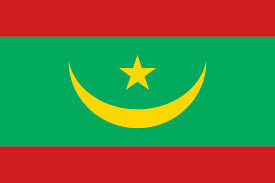Meaning of Colors of Mauritania Flag
What is the Meaning of the Colors of the Mauritania Flag?

A Canvas of Cultural Significance
Flags are not merely pieces of cloth fluttering in the wind; they are powerful symbols of identity, history, and culture. The flag of Mauritania, with its unique blend of colors and design, holds profound significance for its people. In this article, we delve into the symbolism behind each hue adorning the flag of Mauritania, unraveling the layers of history, culture, and national pride.
The Evolution of a Nation: Understanding Mauritania's Flag
The modern flag of Mauritania was adopted on April 1, 1959, just before the country gained independence from France on November 28, 1960. However, its design has undergone several alterations over the years, reflecting the nation's evolving identity and political landscape.
Meaning of Colors of Mauritania Flag
Green: The Color of Islam and Fertility
At the top and bottom of the Mauritanian flag lies a broad green stripe, a hue deeply intertwined with the nation's Islamic heritage. Green is often associated with Islam, symbolizing paradise, nature, and the lush oases of the Sahara. In the context of Mauritania, a predominantly Muslim nation, green represents the importance of religion in society, as well as the country's commitment to its Islamic values and principles.
Furthermore, green also symbolizes fertility and prosperity, reflecting Mauritania's rich natural resources and agricultural potential. It serves as a reminder of the nation's aspirations for growth, development, and abundance for its people.
Gold: The Sands of the Sahara and National Wealth
Centered within the green stripes of the flag is a bold gold band, representing the vast desert landscapes that dominate much of Mauritania's terrain. Gold holds multifaceted significance, symbolizing both the sands of the Sahara and the nation's wealth and resources.
The Sahara Desert, which covers over two-thirds of Mauritania's territory, is not only a geographical feature but also a fundamental aspect of the nation's identity. It represents resilience, strength, and the enduring spirit of the Mauritanian people in the face of harsh environmental conditions.
Moreover, gold is emblematic of Mauritania's mineral wealth, particularly its significant reserves of iron ore. As one of the leading exporters of iron ore in Africa, gold serves as a testament to the nation's economic potential and natural resources, contributing to its development and prosperity.
Red: The Blood Shed for Independence
Completing the tricolor composition of the Mauritanian flag is a vibrant red stripe, symbolizing the sacrifices made by the nation's people in their struggle for independence. Red evokes the blood shed by Mauritanian nationalists during their fight against colonial rule, as well as the courage and determination of those who fought for freedom and self-determination.
Additionally, red represents unity and solidarity among Mauritania's diverse ethnic and cultural groups, fostering a sense of shared identity and purpose. It serves as a reminder of the importance of cohesion and cooperation in building a strong and prosperous nation.
Unity in Diversity: The Harmonious Fusion of Colors
Beyond their symbolism, the colors of the Mauritanian flag come together to form a cohesive and harmonious composition, reflecting the nation's commitment to unity in diversity. Despite its diverse ethnic, linguistic, and cultural landscape, Mauritania embraces the principles of tolerance, inclusion, and mutual respect, as represented by the flag's vibrant palette.
In essence, the Mauritanian flag serves as a visual embodiment of the nation's history, values, and aspirations. It encapsulates the spirit of resilience, unity, and progress that defines the Mauritanian people, serving as a source of pride and inspiration for generations to come.
Contemporary Relevance: Interpreting the Flag in a Modern Context
In the contemporary context, the symbolism of the Mauritanian flag takes on new meaning as the country grapples with the challenges and opportunities of the 21st century. The green, gold and red colors continue to serve as potent symbols of national identity and pride, reflecting the nation's rich cultural heritage and diversity.
In an era marked by globalization, technological advancement, and cultural exchange, the Mauritanian flag represents a beacon of unity and resilience in the face of external pressures and internal challenges. It reaffirms the nation's commitment to preserving its cultural heritage and values while embracing the opportunities of a rapidly changing world.
Moreover, the Mauritanian flag serves as a powerful symbol of hope and inspiration for future generations, reminding them of the sacrifices and struggles of their forebears and the promise of a brighter future for all Mauritanians. It underscores the importance of unity, tolerance, and mutual respect in building a prosperous and inclusive society that honors the legacy of the past while embracing the possibilities of the future.
Conclusion
In conclusion, the colors of the Mauritania flag transcend mere aesthetics, embodying the nation's rich history, cultural heritage, and collective aspirations. From the verdant green of Islam and fertility to the golden sands of the Sahara and the crimson hue of sacrifice and unity, each color tells a story of resilience, pride, and determination.
As Mauritania continues to navigate the challenges of the modern world and chart its path towards progress and prosperity, its flag stands as a powerful symbol of national identity and unity, reminding its people of their shared heritage and the promise of a brighter future.
